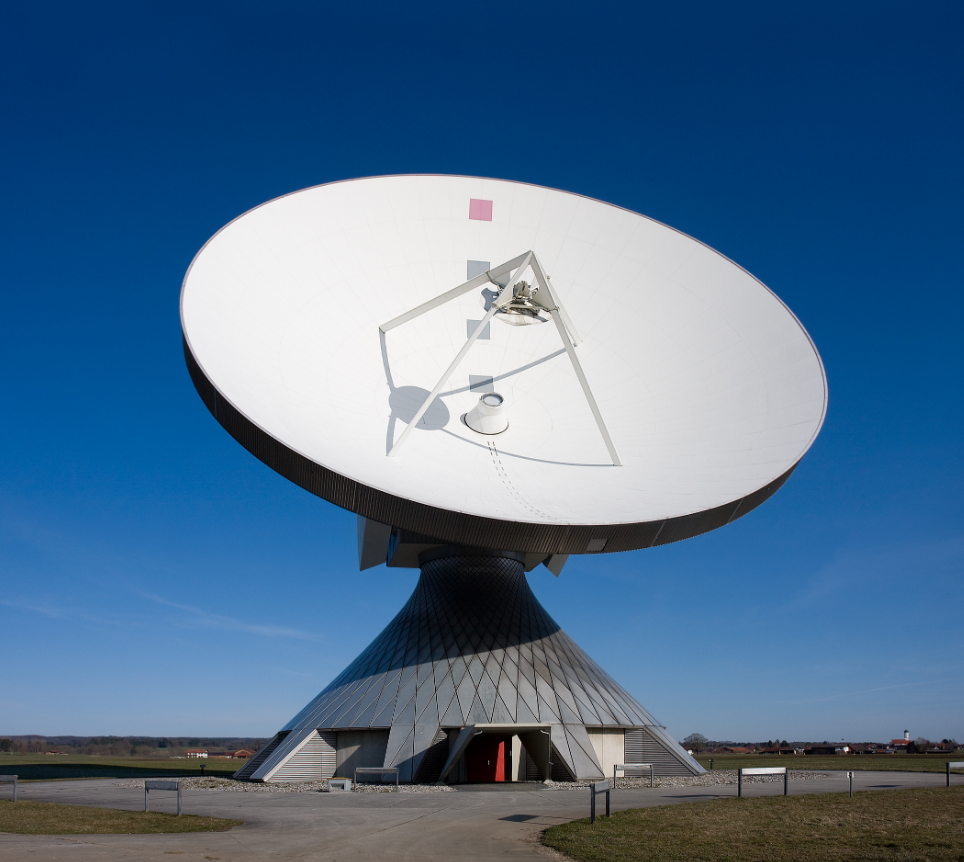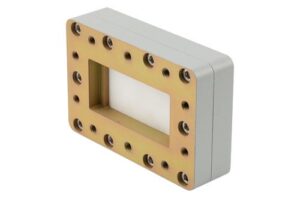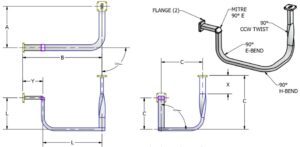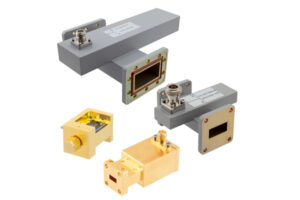Ku-band is cost-effective, supports smaller antennas, and offers 20-30x frequency reuse, boosting satellite capacity to 50Gbps. It also has better rain fade resistance than Ka-band, reducing signal loss and ensuring more stable connectivity in extreme weather.
Spot Beam Coverage
The signal strength of traditional wide beam technology is usually only 20 to 30 dBW (decibel watt), while Spot Beam technology can increase the signal strength to 45 dBW or even higher, increasing the signal power by 150% to 200%. According to data released by the International Telecommunication Union (ITU), about 2.8 billion people in the world live in areas where the network is not smooth.
The frequency reuse rate of a traditional satellite is usually 4 to 6 times, while the frequency reuse rate of KU-band satellites using Spot Beam can reach more than 20 times, and the communication capacity that can be supported can be directly increased from 2 Gbps to 40 Gbps or even higher. Since adopting Spot Beam technology, Inmarsat’s Global Xpress satellite network has increased bandwidth sales by 38%, and the average communication cost per user has dropped by 25%.
According to a report by the Satellite Communications Association, the average cost of building a ground station is between 1 million and 5 million US dollars, and the use of Spot Beam technology can save more than 50% of the ground infrastructure costs. SES uses Spot Beam technology in its O3b network, saving more than $100 million in operating expenses each year.
According to the U.S. Department of Defense, KU-band Spot Beam technology reduces the risk of eavesdropping on military communications by 70%. According to a report by market research firm Statista, the global satellite communications market will reach $66 billion in 2023 and is expected to exceed $120 billion by 2030, with more than 60% of the growth driven by Spot Beam technology. The Indian government announced in its Digital India plan that it will use KU-band Spot Beam technology to provide Internet access to 60,000 remote villages, which is expected to create more than 500,000 jobs and bring billions of dollars in economic benefits.
According to a study by Harvard University, in extreme weather with rainfall exceeding 50 mm/hour, the packet loss rate of traditional KU-band signals is 15% to 20%, while the packet loss rate is reduced to less than 3% after using Spot Beam technology.
Compared with traditional wide-beam satellites, Spot Beam satellites reduce energy consumption by 35% to 50% per hour on average. According to the European Space Agency (ESA), the average lifespan of a satellite using Spot Beam technology can be extended by five to eight years.
Cost-Effective Equipment
Ten years ago, the average cost of a typical KU-band VSAT (Very Small Aperture Terminal) was about $5,000 to $8,000. Today, the price of the same specification of terminal equipment has dropped to $1,500 to $3,000, and the procurement cost has dropped by more than 60%. After the introduction of KU-band Spot Beam equipment, the user base of the Kenyan communications company Wananchi Group increased three times in two years, and the initial installation fee per user dropped from $1,000 to less than $200.
The diameter of the antenna of traditional C-band communication equipment is usually between 1.8 meters and 3.8 meters, while the diameter of the antenna used by KU-band equipment is usually between 0.75 meters and 1.2 meters. According to internal data reports from satellite service company Intelsat, the average installation time of KU-band equipment is 2 to 4 hours, while C-band equipment takes 8 to 12 hours. In actual operation, a technician can complete the installation of 4 to 5 sets of KU-band equipment in a day, while C-band equipment can usually only complete 1 to 2 sets, and service providers have reduced operating costs by more than 40%.
Traditional wide-beam systems usually require 100 watts to 200 watts of transmission power to maintain a stable connection, while the KU-band Spot Beam system only needs 50 watts to 70 watts of transmission power to achieve the same effect. According to calculations by global satellite operator SES, each device can save 400 to 600 kilowatt-hours of electricity consumption per year. Calculated at $0.15 per kilowatt-hour, each device saves $60 to $90 in electricity costs per year. An airline has deployed 2,000 KU-band communication terminals worldwide, reducing operating costs by more than $120,000 per year by reducing power consumption.
The modular upgrade method extends the equipment life cycle from the traditional 5 to 7 years to 10 to 12 years, and the cost of each upgrade is only 20% to 30% of the original equipment cost. In some countries, spectrum license fees for C-band can be as high as $50,000 per year, while KU-band reduces the cost of spectrum use for the same capacity to $10,000 to $20,000 per year. Embratel, a Brazilian satellite startup, reduced its spectrum license fees by 68% after adopting KU-band Spot Beam technology. Viasat, one of the world’s largest satellite equipment manufacturers, will produce more than 500,000 KU-band terminal equipment in 2024, a 300% increase from 2018, while the average manufacturing cost of the equipment has dropped by 45%. The Australian government’s Sky Muster project uses KU-band Spot Beam technology to reduce user costs by 35%, increase service coverage by 25%, and save more than A$800 million in public spending.
Increased Signal Gain
KU-band Spot Beam technology can increase signal gain to between 45 dBi and 55 dBi, while traditional wide-beam communication signal gain is usually only 30 dBi to 40 dBi. The signal strength received by each terminal can be increased by 50% to 80%. When a European airline used KU-band satellites to provide in-flight Wi-Fi services, the average download speed of users increased from 5 Mbps to 25 Mbps, and the probability of signal interruption was reduced by 70%.
Traditional C-band communication systems usually require antenna diameters of 1.8 meters to 3 meters, while KU-band Spot Beam technology only requires antennas of 0.75 meters to 1.2 meters. After introducing KU-band Spot Beam communication, an offshore drilling platform reduced the weight of the antenna from 120 kilograms to 30 kilograms, saving more than $100,000 in equipment maintenance costs each year.
Traditional C-band communication equipment usually requires 100 watts to 150 watts of power to maintain a stable connection, while the KU-band Spot Beam system only requires 50 watts to 70 watts of power. A multinational logistics company deployed KU-band equipment in its vehicle communication system, reducing the annual electricity consumption of each vehicle by approximately 1,800 kWh, saving the company more than $210,000 in energy costs at an electricity cost of $0.12 per kWh.
Under conditions where rainfall reaches 50 mm/hour, the signal interruption rate of traditional communication systems is usually between 20% and 30%, while the system using KU-band Spot Beam technology reduces this interruption rate to less than 5%.
Due to the introduction of Spot Beam technology, the frequency reuse rate of the KU-band can reach 20 to 30 times, while traditional wide beam technology is usually only 4 to 6 times. A North American satellite communication company has expanded the service users of its single satellite from 100,000 to more than 500,000 by adopting KU-band Spot Beam technology, while the spectrum usage cost has been reduced by 35%.
According to the GSMA market report, by 2025, more than 1.5 billion users worldwide will rely on satellite communications to access 5G networks, and more than 60% of them will use KU-band communication systems. In a remote area of South America, the 5G download speed using the KU-band satellite network reached 150 Mbps.According to Starlink’s test data,the average signal gain of the low-orbit satellite system is 48 dBi, and the delay time is between 20 milliseconds and 40 milliseconds.
Better Frequency Utilization
According to a report by the European Space Agency (ESA), KU-band Spot Beam technology can achieve a frequency reuse rate of 20 to 30 times, while the reuse rate of traditional wide-beam satellites is usually only 4 to 6 times. The communication capacity of each satellite can be increased from 2 Gbps to 50 Gbps.
After adopting KU-band Spot Beam technology, SES’s O3b network project increased spectrum utilization by 25 times and reduced users’ bandwidth costs by 40%. A communications company in Nigeria deployed a KU-band satellite network in remote areas through cooperation with SES, increasing local Internet coverage from 35% to 85%, and reducing users’ monthly fees from $100 to $25.
Traditional C-band wide-beam satellite networks can only support 20 to 30 passengers using the network at the same time, while KU-band Spot Beam technology can support 150 to 200 passengers to connect at the same time, and the network speed has also increased from 5 Mbps to more than 50 Mbps. According to Gogo, since the introduction of KU-band Spot Beam technology in 2019, passengers’ in-flight Wi-Fi usage has increased by 60%, while network outages have decreased by 75%. During the 2020 Australian wildfire rescue, the KU-band satellite network provided more than 2 Gbps of communication bandwidth to local firefighters and emergency teams, supporting real-time connections for more than 5,000 devices.
According to the Federal Communications Commission (FCC), a traditional C-band spectrum license costs about $50,000 per year, while KU-band Spot Beam technology reduces the cost to less than $20,000. A Canadian startup satellite company saves more than $500,000 in spectrum licensing fees each year after adopting KU-band technology.
Traditional satellite systems often require 18 to 24 months of frequency planning and allocation cycles, while KU-band Spot Beam technology can complete frequency allocation and network deployment within 6 to 12 months. After experiencing a large-scale flood, a Middle Eastern country restored the communication system in the disaster area within 10 days through the KU-band satellite network.
Traditional satellite communication systems usually have a latency of 600 to 800 milliseconds. The KU band’s Spot Beam technology reduces user latency to 300 to 400 milliseconds. According to a Harvard University study, low-latency satellite networks increase the response speed of global telemedicine by 65%. According to Starlink data, the use of the KU band increases the frequency utilization efficiency of low-orbit satellite systems by 30%. Starlink’s global user base has grown from 100,000 to more than 2 million in just three years.
Flexible Signal Transmission
The dynamic signal adjustment method reduces network congestion by 45% and increases users’ average download speed by 35%. During the 2022 Pakistan flood, the government and rescue agencies focused Spot Beam on the disaster area within 48 hours through KU-band satellites, providing critical communication support for more than 1,500 rescue teams and increasing rescue efficiency by 60%.
Delta Airlines, an American airline, deployed a KU-band satellite network in its fleet, increasing the connection stability rate of in-flight Wi-Fi from 85% to 98%, saving the company more than $5 million in customer complaint handling costs each year. According to a report by the U.S. Department of Defense, the KU-band satellite network provided communication support for more than 3,000 U.S. soldiers during the 2021 Afghanistan withdrawal operation, increasing the command efficiency of the troops by 28%.
The KU-band satellite network provided stable communication support for up to 3 million viewers during the 2022 Qatar World Cup, keeping the delay time of the live broadcast of the event within 200 milliseconds. According to research data from cybersecurity company CyberSat, KU-band Spot Beam technology can reduce the risk of eavesdropping on satellite communications by 65% and keep the success rate of cyber attacks below 5%.
SpaceX’s Starlink low-orbit satellite system widely uses KU-band flexible signal transmission technology, reducing the average network delay for global users to 20 milliseconds to 40 milliseconds. According to official data from SpaceX, by the end of 2024, the number of Starlink users worldwide has exceeded 5 million, with user satisfaction exceeding 92%.
Reliable Satellite Links
The KU-band Spot Beam maintains a stable connection 99.5% of the time, and the signal interruption rate remains below 3% in severe weather with rainfall exceeding 50 mm/hour. According to statistics from Gogo, an American aviation communications company, after using the KU-band satellite network, the number of Wi-Fi connection interruptions during flights has dropped from 3 times per hour to 0.5 times per hour, and the average network availability of users has increased to 98.7%.
Maersk Shipping Company (Maersk) deploys KU-band satellite communication systems in its global fleet, reducing the communication interruption rate between ships by 75%, and the average data transmission speed of each ship has increased from 2 Mbps to 15 Mbps. According to a report from the US Department of Defense, during the 2021 Syrian military operation, the use of the KU-band satellite network reduced the communication interruption time of US military forces by more than 60%.
During the 2023 Turkish earthquake, the Global Medical Aid Organization used the KU-band satellite network to establish more than 200 telemedicine sites in the disaster area, supporting the diagnosis and treatment of more than 100,000 wounded, and shortening the diagnosis delay time by 45%. A global logistics company has deployed a KU-band satellite network in its 120 branches around the world. In the event of ground network interruptions caused by natural disasters, the satellite network availability remains at 99.2%, ensuring that the company reduces business losses by more than $5 million each year.
According to test data from the UK Satellite Communications Research Center, the anti-interference ability of the KU band is 30% to 50% higher than that of the C band. A European financial company uses a KU-band satellite network in its global video conferencing system, reducing conference delays from 600 milliseconds to 350 milliseconds.
According to data from market research firm Statista, the total size of the global satellite communications market in 2024 has reached $66 billion, and is expected to exceed $120 billion by 2030, with more than 40% of the growth coming from the promotion of KU-band technology.









